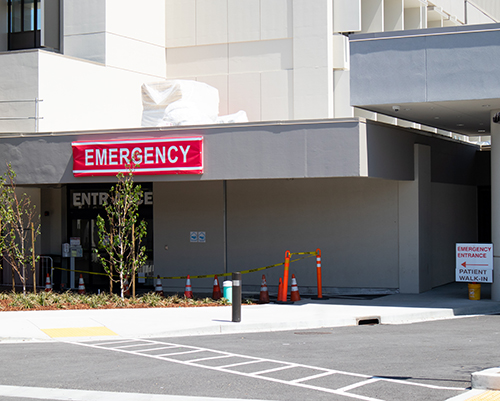 In the wake of rapid technological advancements, many healthcare facilities need to expand. But these priority facilities can rarely shut down during maintenance and renovations, which is why it’s important for contractors to follow proper safety practices for hospital construction.
In the wake of rapid technological advancements, many healthcare facilities need to expand. But these priority facilities can rarely shut down during maintenance and renovations, which is why it’s important for contractors to follow proper safety practices for hospital construction.
Establish policies and procedures with the hospital
Hospitals have special requirements every visitor must follow, and contractors are no different. In addition to planning for the safety of your workers, you’ll also need to consider the well-being of nearby patients, staff and visitors.
Before starting construction work at a hospital, make sure you meet with the staff to lay out agreed-upon safety policies and procedures. Early communication is key when it comes to preventing infection via an infection control risk assessment (ICRA), managing waste and reducing noise.
To start, you’ll want to answer the following questions:
- Who is your main hospital contact?
- Which zones will you be operating in?
- Which areas are considered high risk zones for patients (such as those with advanced cancer)?
- What areas are restricted?
- What entrances can you use?
- Do you need badge access?
- Where should you park?
- What hours can you work?
Be sure to obtain any necessary working permits from the hospital, such as those that allow cutting and welding on site. Additionally, take necessary steps to make sure you don’t interrupt the facility’s power source at any time.
Be as clean as possible
When working on a healthcare construction project, it’s possible you’ll be operating near people who have compromised or weakened immune systems, which is why it’s important to isolate construction areas as much as you can. Consider using temporary partitions and portable dust containment units.
Make cleanliness a constant thought, rather than letting material build up in areas. Pretend as though your immediate work area was filled with patients who need to be free from particles and debris.
The idea is to keep mud, dust and other materials away from open hospital areas, maintaining a clean environment as much as possible.
Provide necessary training
Training is essential for maintaining a safe work environment at a healthcare job site. Remember to share the predetermined site safety protocols with your employees. Additionally, help them develop a mindset of fostering patient well-being and comfort.
Crew members should remain sensitive when managing material delivery flow to make sure traffic doesn’t pose a risk to patients. They should also be aware of any contaminant control procedures in nearby areas.
The same goes for subcontractors and vendors, who likely won’t spend as much time on the job site as you and your employees and won’t be as aware of safety protocols.
Follow proper safety practices for hospital construction
By providing construction services to healthcare facilities, you’ll be contributing to better healthcare for the future. Remember to keep your safety – and the safety of patients, staff and visitors – at the forefront of your mind at all times.
Related posts
How construction companies get workers to adopt a safety culture
6 ways to improve your construction document management system